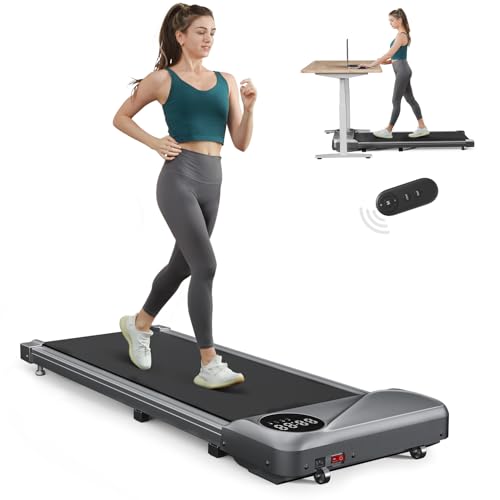What Is Gym Treadmill And Why Is Everyone Talking About It?

Treadmills: A Comprehensive Guide to Understanding Their Functionality, Benefits, and Appropriate Selection
Intro
Treadmills have ended up being a staple in modern-day fitness regimens, both in homes and health clubs worldwide. They provide a practical and effective way to maintain cardiovascular health, boost endurance, and help in weight management. This short article checks out the various kinds of treadmills, their benefits, features to consider when purchasing, and some FAQs to guide users in making informed decisions.
Types of Treadmills
When it concerns picking a treadmill, it is important to understand the various types offered in the market. Here are the primary classifications:
1. Manual Treadmills
- System: These treadmills have a basic style and count on the user's efforts to move the belt.
- Pros: More budget-friendly, quieter operation, no electricity required.
- Cons: Limited features, may not offer the same variety of exercise intensity.
2. Motorized Treadmills
- System: Powered by a motor that drives the belt, enabling users to stroll or run at a set speed.
- Pros: Greater variety of speeds and inclines, equipped with various features such as heart rate screens and exercise programs.
- Cons: More expensive and might require more upkeep.
3. Folding Treadmills
- System: Designed for those with minimal area, these treadmills can be folded for easy storage.
- Pros: Space-saving, often motorized, versatile functions.
- Cons: May be less long lasting than non-folding designs.
4. Industrial Treadmills
- System: High-quality machines designed for use in health clubs and gym.
- Pros: Built to stand up to heavy usage, advanced functions, often include service warranties.
- Cons: Pricey and not ideal for home use due to size.
5. Curved Treadmills
- Mechanism: A special style that allows users to move the belt using their own energy.
- Pros: Offers a more natural running experience, promotes much better running kind.
- Cons: More costly and can be noisier.
| Treadmill Type | Pros | Cons |
|---|---|---|
| Manual | Inexpensive, no electrical power needed | Minimal functions |
| Motorized | Variety of speeds, advanced features | Upkeep required |
| Folding | Space-saving, frequently motorized | May lack sturdiness |
| Industrial | Built to last, professional-grade features | Costly |
| Curved | Natural running experience, promotes great kind | Higher cost |
Advantages of Using Treadmills
Treadmills provide various advantages that can contribute to one's general health and fitness goals. Some of these benefits include:
- Convenient Workouts: Treadmills enable users to exercise inside your home regardless of weather condition conditions.
- Cardiovascular Health: Regular use can enhance heart health by increasing endurance and promoting healthy circulation.
- Weight Management: Effective for burning calories, which assists in weight loss and management.
- Personalized Workouts: Users can control speed, incline, and duration to produce individualized exercise experiences.
- Safety: Treadmills supply a foreseeable surface, decreasing the risk of falls compared to outdoor running.
- Multifunctional: Many treadmills included features like heart rate monitors, workout programs, and even entertainment systems.
Selecting the Right Treadmill
When picking a treadmill, possible purchasers need to consider numerous key aspects:
Features to Consider:
- Motor Power: Typically determined in horsepower (HP), a motor strength of a minimum of 2.5 HP is recommended for major runners.
- Belt Size: A longer and larger belt accommodates numerous stride lengths, providing comfort during exercises.
- Slope Settings: Adjustable incline functions replicate outside hill running and can increase exercise strength.
- Weight Capacity: Ensure the treadmill can support the user's weight for security and durability.
- Console Features: Look for easy to use control panels, workout programs, and Bluetooth compatibility for streaming music or other functions.
Budget Considerations
- Under ₤ 500: Entry-level manual treadmills suitable for casual walkers.
- ₤ 500 - ₤ 1,500: Mid-range motorized treadmills that use more functions and better durability.
- ₤ 1,500 - ₤ 3,000: High-end designs with advanced innovation, bigger motors, and longer service warranties.
- Over ₤ 3,000: Commercial-grade treadmills perfect for regular use in gyms or training centers.
Regularly Asked Questions (FAQs)
1. How often should I use a treadmill?
It is recommended to use a treadmill a minimum of 3 to five times a week, integrating different strength levels for best outcomes.
2. Can I drop weight by utilizing a treadmill?
Yes, consistent use of a treadmill can contribute to weight loss, specifically when integrated with a balanced diet and strength training.
3. What is the very best speed to walk on a treadmill for novices?
A speed of 3 to 4 miles per hour is an appropriate range for newbies. It's necessary to start sluggish and slowly increase speed as comfort and stamina improve.
4. Do I need to utilize a treadmill if I already run outdoors?
Utilizing a treadmill can supply fringe benefits, such as regulated environments and differed exercises (slope, periods) that are not always possible outdoors.
5. How do I preserve my treadmill?
Routine maintenance consists of lubing the belt, cleaning up the deck and console, and examining the motor for optimum efficiency.
Treadmills are essential tools for those aiming to enhance their fitness levels in a controlled and hassle-free way. With numerous types readily available, comprehending their functions and benefits is essential for making a notified purchase. By thinking about relevant site , area schedule, and budget constraints, individuals can find the most appropriate treadmill that fits their way of life. Incorporating treadmill exercises into a well balanced physical fitness routine can cause better health results and an enjoyable workout experience.

